Deep blue Sea. Submarines in the Pacific theater
2 September 1944, the US Navy Finbek boat received an SOS signal from an aircraft that fell into the ocean. After 4 hours “Finbek” arrived in the disaster area and pulled out a scared, gangly pilot from the water. George Herbert Bush, the future 41 President of the United States, was saved.
What associations have the bizarre words “Sargo”, “Balo”, “Gato”?
There are not so many versions: night shipwreck, fear of diving into the blue abyss, foamy trail of racing torpedoes, a periscope hiding in the waves ... Japanese sailors understood the meaning of the word "Gato" well. Going on a long hike, the samurai put on a clean underwear and said goodbye to their loved ones - only a few were destined to go back.
Ahead, in the vast expanses of the ocean, the underwater ghosts of the US Navy moved silently. The meeting with the boat did not bode well - the submariners smashed the Imperial fleet to shreds, burying alive on the cold bottom of the once best naval forces in the world.
The dying fleet of Japan resisted until the last breath - even when all aircraft carriers and battleships were lost, when the last kamikaze pilots died, and the exits from the naval bases were tightly locked aviation and enemy submarines, Japanese submariners stubbornly continued to search for targets in the ocean.
30 July 1945 submarine I-58 smiled for the last time good luck - the torpedoes overtook the American heavy cruiser Indianapolis. The death of "Indianapolis" was the largest catastrophe in the number of victims in stories US Navy. But the main mystical circumstance turned out much later: the I-58 submarine was only four days late. The cruiser managed to deliver the components of the “Malysh” nuclear bomb to the island air base of Tinian (dropped on Nagasaki on August 9 of the year 1945).
Wolf laws
In the years of the Second World War some kind of nightmarish massacre was staged in the Pacific Ocean. From the standpoint of our days, it is impossible to understand how these tiny “pelvis” made transoceanic crossings and fought with the enemy at a distance of thousands of miles from their native shores.
However, the statistics sound just awful: primitive diesel-electric submarines, which spent 90% of their time on the surface, sank a third of the Imperial ships fleet! A total of 201 warships, ranging in size from the frigate PLO to the strike aircraft carrier. The closest rival, carrier aircraft, was 40 points behind the submarines.
Among the trophies of submariners are the shock aircraft carriers "Taiho", "Shokaku", "Shinano", "Jungyo", "Unryu", heavy cruisers "Takao", "Atago", "Maya", dozens of destroyers ...
In addition to the Americans, the Japanese fleet was tormented by the submarines of Her Majesty - the heavy cruiser "Asigara" was recorded on the account of the British submariners (the actions of the allies are not reflected in the diagram).
For a long time they didn’t stand on ceremony with the Japanese transport and support vessels - the “dizeluhi” ruthlessly killed everyone who met them on the way. Here, submariners were generally out of competition - 1113 sunk ships total tonnage 4 779 902 gross registered tons - are considered purely torpedo attacks, excluding the mines put up by the boats and group victories of heterogeneous fleet forces.
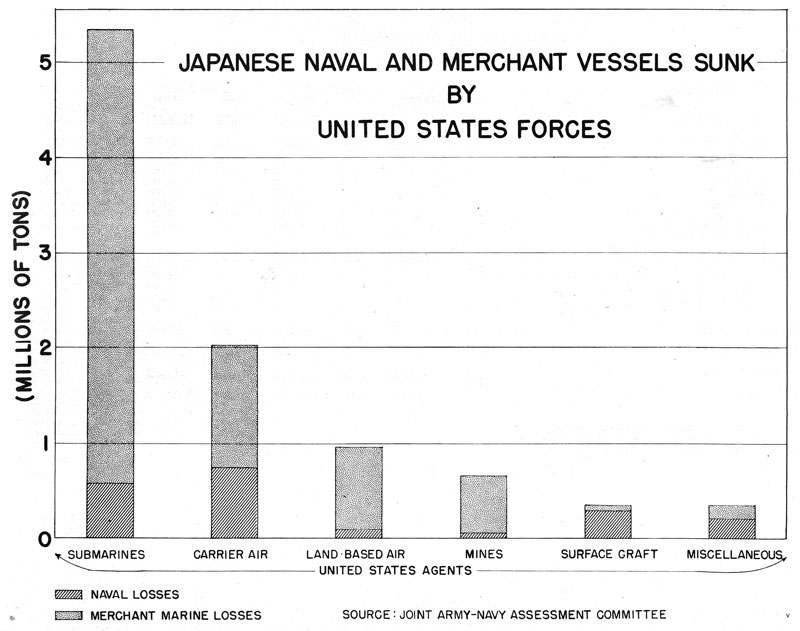
Distribution of losses of the Japanese fleet, indicating the causes of death (warships / transports)
From left to right: most of all "burned" the US Navy submarines. Next - carrier-based aviation (the minimum gain in tonnage of warships destroyed, but an absolute loss in tonnage of sunk transports). Basic aviation. Mines. Torpedo-artillery duels of surface ships (unexpectedly many trophies!). Mixed losses (shore batteries, group wins, etc.)
There are many secrets in the diagram: for example, the “mines” column - on 95%, the merit of basic aviation - the Yankees preferred to mine sea communications from the air.
And most of all warships were destroyed by submariners - the formal tonnage “winning” of deck aircraft is due to the sinking of a large number of large targets (Midway aircraft carriers, battleships Musashi and Yamato), while at the same time among the victims of American submariners there are a great many destroyers, frigates and enemy submarines.
Who are you listening to? - seamen Krigsmarine exclaim, - it's the Yankees - known mediocrity and loafers. Which ones are submariners? Only they know how to decorate boxes with photo cards with naked Hollywood stars.
Indeed, the achievements of Americans fade against the background of the "wolf packs" of Grand Admiral Doenitz - more than 2600 vessels have been recorded on the account of German submariners with a total tonnage of 13 million tons!
Unlike the US Navy, the Germans had to operate in much more severe conditions - the allies' anti-submarine defense and the convoy system was incomparable in strength to the Japanese ASW (for comparison, during the war years the Americans lost 50 boats; the Germans lost 783).
On the other hand, the number of boats from the Germans was more than five times, and the density of cargo traffic in the Atlantic was incommensurable with the Japanese shipping.
As a result, the result - almost 5 million tons of cargo sunk in four years of fighting in the Pacific. Solid.
In reality, it is difficult to say what is more important: the sinking of a cruiser, transports with weapons or oil tankers?
One thing is clear: the US Navy boats violated Japanese communications, depriving Japan of the supply of strategically important raw materials. But the garrisons on the distant islands, thanks to the American boats, were left without provisions and ammunition.
This is how wars are won.
"Cat shark"
In just four years of war, combat zones in the Pacific have reached the order of 200 American boats of eight main types:
- Type V - 9 series of obsolete submarines, built in 1920-s;
- “Porpoise”, “Salmon”, “Sargo” and “Tambor” - another 38 submarine of pre-war construction;
- “Gato” (77 units), “Balao” (122 units) and “Tench” (29 units). Many "Balao" and "Tench" were completed after the war, and did not have time to take part in the battles.
In addition, in the training units and in the reserve, there were about fifty outdated submarines of the types “O”, “R” and “S”, built during the First World War.
Of course, the main striking force of the American submariners were the legendary "Gato" - powerful and sophisticated boats, en masse to the fleet at the height of the fighting in the Pacific Ocean. Total for the period 1940 to 1944. American shipyards thrashed 77 submarines of this type.
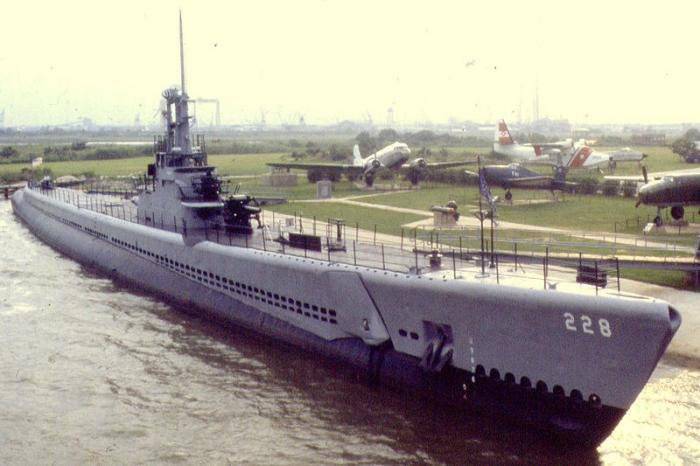
Included in the top ten most efficient American submarines - 15 trophies with a total displacement of 80 thousand tons
With their bizarre name - “Gato” - the submarines are obliged to the cat shark (gato - cat in Spanish). In order not to bore an impatient reader by listing boring TTX boats, we note their key feature: the American “Gato” was three times larger than the average German U-bot.
A strong, fast and heavily armed underwater killer, created for action on ocean communications. Surface speeds of 20 units, 10 torpedo tubes and 24 torpedoes, a universal artillery battery consisting of 76 mm guns, antiaircraft guns Bofors and Oerlikon (mm 20 and 40 mm). High-quality "stuffing" and radio-electronic means - radar for detecting targets on the surface of the water and in the air, sonars, communications equipment - in this area "Gato" set the best world standards. A supply of provisions and fuel on board allowed 75-day trans-ocean raids from Hawaii to the coast of Japan.
Being underwater, a large boat could go to the periscope depth in just 30-35 seconds - the gato’s ascent / dive speed was beyond praise.
As for the shortcomings: the main problem of the “Gato” was a relatively shallow depth of immersion: the range of working depths was limited to 90 meters (for comparison: the usual German U-bot of the VII-series could safely dive into the abyss of 200 or more meters).
The problem was partially fixed on the next-generation American boats, the Balao.
Structurally, the "Balao" was a former "Gato", but now the hull of the boat was made of high-strength steel with a large yield strength, which made it possible to increase the working depth of the dive to 120 meters. During one of the test dives, the USS Tang boat accidentally “drank” water with a torpedo tube and fell down 187 meters. The case stood up to the test.
Chronicles of sea battles
In hot sea battles, steel was tempered, under the blows of the ocean waves the plating shook - small angry fish fought to the death with the enemy, sending Japanese ships to the bottom. In the battles were born new heroes and legends.
The stray projectile exploded on the bridge of the “Growler” submarine. Wounded commander Howard Gilmore ordered immediate immersion; The brave sailor himself did not have time to descend into the hatch, remaining forever in the ocean (awarded the Medal of Honor).
The submarine "Archer Fish" (type "Balao") managed to sink the largest ship in the history of the submarine fleet - the Japanese aircraft carrier "Shinano" (70 thousand tons).
But the “Flasher” (the “Gato” type) became the most productive American boat - the boat sank four large tankers, a cruiser and a number of transports with a total displacement of 100 thousand tons.
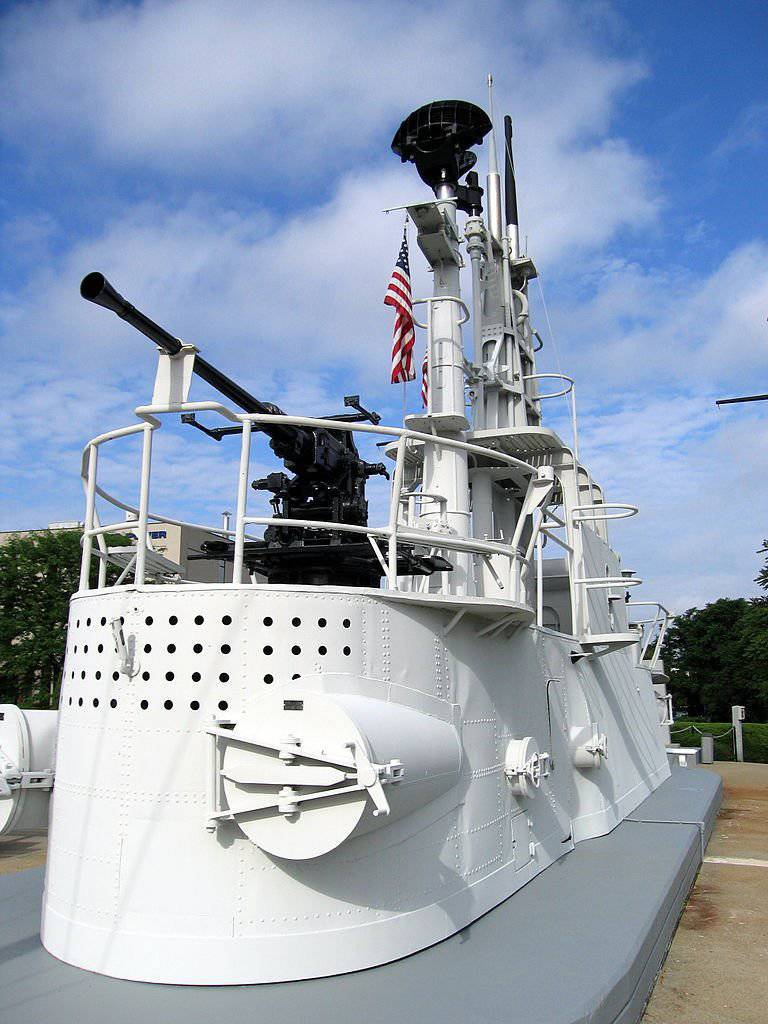
An interesting fate awaited the Mingo submarine. After the war, she was transferred to the Japan Navy Self-Defense Forces, where she served as Kuroshio until 1971.
Another boat, the Catfish, was sold to the Argentine Navy. Renamed Santa Fe, she died in the 1982 year during the Falklands War. But this is not the limit of longevity!
The submarine "Hai Pao" (formerly USS Tusk) is still in the composition of the Navy of the Republic of Taiwan. Initially, the boat was sold as a test stand with sealed torpedo tubes and dismantled weapons, however, the clever Chinese restored the boat, giving it the status of a combat training unit.
The reason for the exceptional longevity of American boats wave is obvious - the post-war modernization of the program GUPPY (Greater Underwater Propulsion Power Program). All outdated weapons and equipment were removed from the boats, the hull lines were optimized, filling all the vacant internal space with batteries. As a result, the underwater speed of the upgraded “Gato” and “Balao” sometimes reached the 16-18 nodes (to the envy of the German “Electrobot”). Kits of modern radar and hydroacoustic stations additionally contributed to the popularity of these boats on the global maritime market.
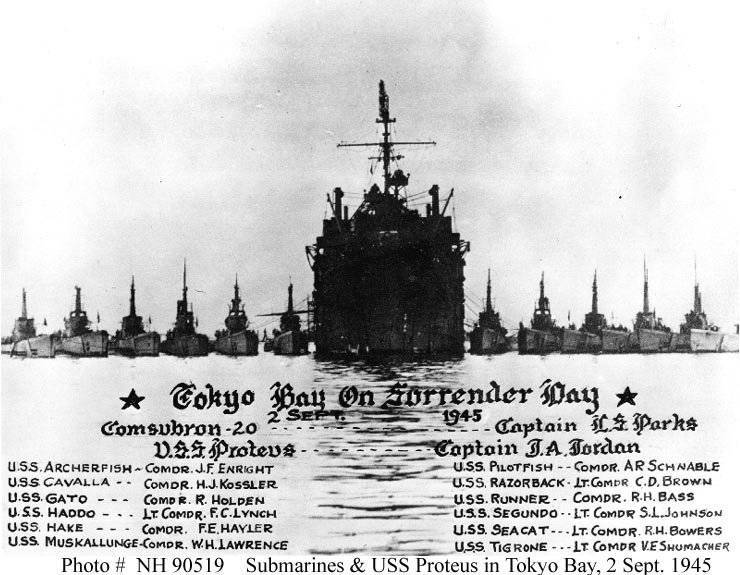
During the Second World War, American submarines performed many different tasks: in addition to the total extermination of the Japanese fleet, they secretly monitored naval bases and enemy positions on islands in the Pacific Ocean, were on duty at evacuation points on B-29 strategic bombers, periodically saving pilots jumped out of wrecked cars.
Unlike the wolf packs of Kriegsmarine, the Americans preferred to act alone. The huge ocean was broken into many squares, in each of which the US Navy submarine moved, having the order to sink everything that moves. Special attention was paid to the important straits and passages in the combat zones - every time, breaking through to help their forces, the Japanese squadrons fell under a crazy torpedo fire.
American submariners made a major contribution to the victory in the Pacific - boats strangled Japan’s industry, depriving it without supplies of raw materials and oil. Boats blocked the Japanese borders on the Pacific Islands and destroyed a third of the warships of the Imperial fleet. Without the help of these small but very angry "fish", victory in a naval war would be impossible.
Heroes of the Imperial Navy
The Japanese submarine fleet suffered one key disadvantage - the lack of radar. The legendary radio-electronic industry of Japan did not cope with the task, as a result, primitive radar systems appeared on cruiser boats only by 1945. There were no radars on medium and small submarines at all.
It is not difficult to guess about the consequences of this regrettable situation - the American patrol aircraft instantly calculated the helpless boats circling on the surface while recharging batteries, and drowned them like puppies. In total, during the war years, the Japanese lost, for various reasons, the order of 130 submarines, some of which became victims of navigation errors and typhoons.
But, despite the lack of radar, relative weakness of weapons and low performance characteristics (most boats couldn’t dive deeper than 50 ... 75 meters), Japanese submariners performed amazing tasks - organized a round-the-world "underwater bridge" with Germany to exchange important instruments, drawings and materials, supplied with food, ammunition and medical supplies, surrounded by garrisons on the islands of the Pacific Ocean, delivered reinforcements and evacuated the wounded (for example, the Japanese units on the islands of the Aleutian ridge — Kyska and Attu) kept only o thanks to divers).
Special tasks, reconnaissance, throwing sabotage groups. A separate amusing page in the history of the Japanese fleet was the creation of "submarine aircraft carriers" - in September 1942, the miniature seaplane from the I-25 submarine symbolically "bombed" Oregon forests, dropping two incendiary phosphoric tiles to America. The first and only bombardment of the continental US throughout the war carried a much deeper subtext: the Japanese General Staff seriously discussed the operation “Cherry Blossoms at Night” - using the submarine aircraft carriers to spray the plague, anthrax and other abominations from the Japanese military laboratories on the West Coast of the USA Along the way, it was necessary to bomb the floodgates of the Panama Canal, and then, according to the views of Japanese strategists, an era of universal love and prosperity was to come.
Fortunately for the Yankees, the Japanese had neither the strength nor the capacity to implement their plans.
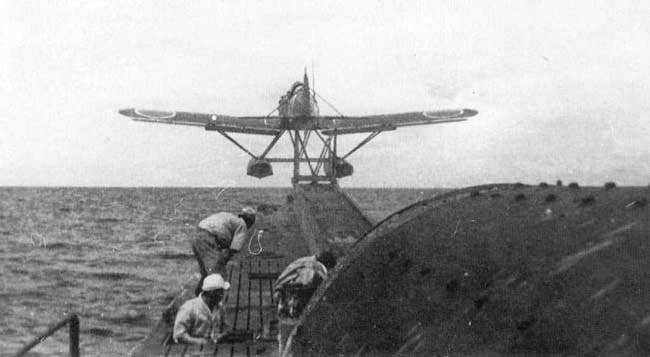
Fantasies are good, but submariners should not forget about their main task - violation of the enemy’s sea lanes. Against the background of the Kriegsmarine and US Navy records, the Japanese success looks more than modest, however, even with the enemy’s multiple superiority at sea and in the air, the Japanese submariners managed to brutally terrorize the Allies, sending many ships to the bottom.
Japanese submarine killers were active in a vast area, from the icy Bering Sea to the tropical latitudes of the Indian Ocean. According to the data of the injured party (i.e., the data are not invented by submariners and fully correspond to reality) only for the period from November 1942 to March 1943. Japanese boats managed to sink 42 British, Dutch, Australian and American transport in the Indian Ocean.
A lot of painful blows received the US Navy. In addition to the already mentioned “Indianapolis”, the Japanese boats sank the aircraft carrier “Wasp” and finished off the damaged “Yorktown”. The escort carrier Laisky Bay was sunk. Serious damage from the torpedoes received the battleship North Caroline and the strike aircraft carrier Saratoga. Also on the account of the submarines of the Imperial fleet are many destroyers and submarines of the enemy, seaplane bases, naval tankers, tankers, supply vessels ... Japanese submariners have something to remember and have much to be proud of.
Small photo gallery:
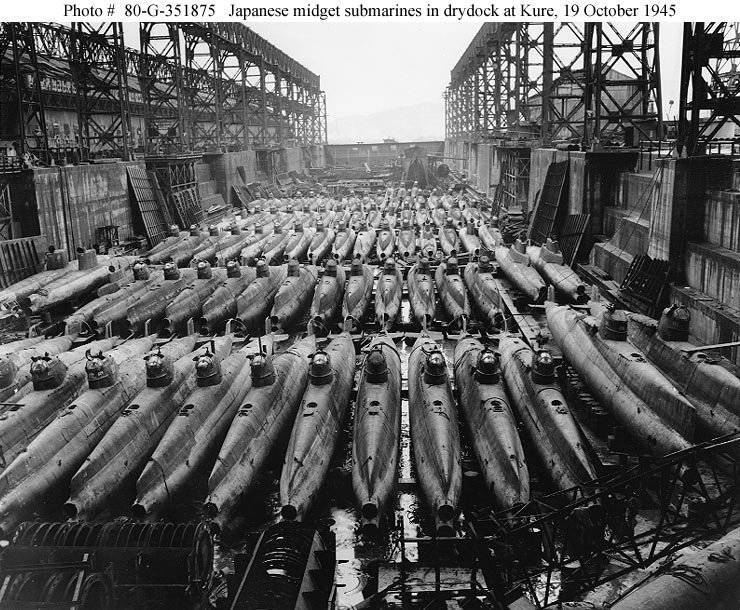
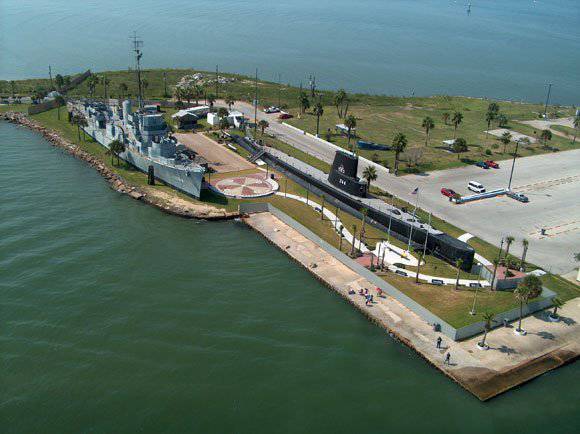
Baby sank 4 enemy ship, including the shock aircraft carrier "Shokaku"
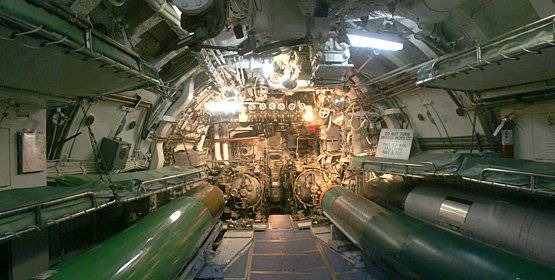
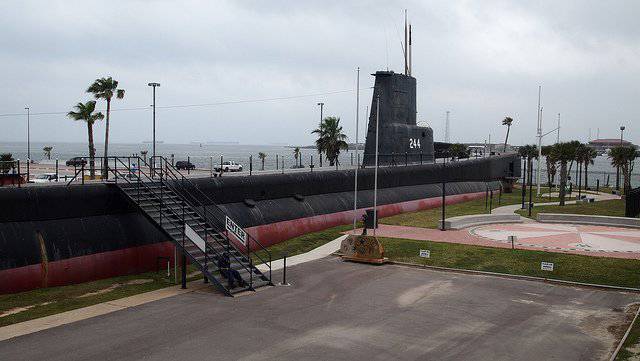
Statistical data -
Japanese Naval and Merchant Shipping Losses
During World War II by All Causes, Prepared by
The Joint Army-Navy Assessment Committee
NAVEXOS P 468
February 1947
Illustrations -
http://www.wikipedia.org/
http://navsource.org/
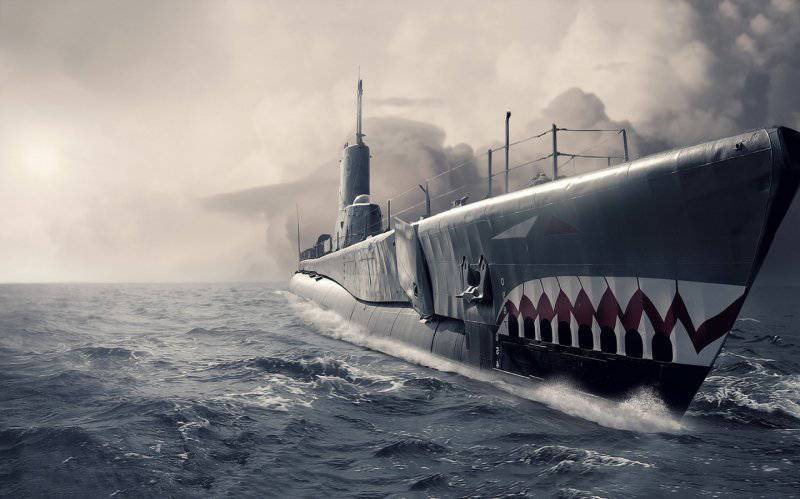


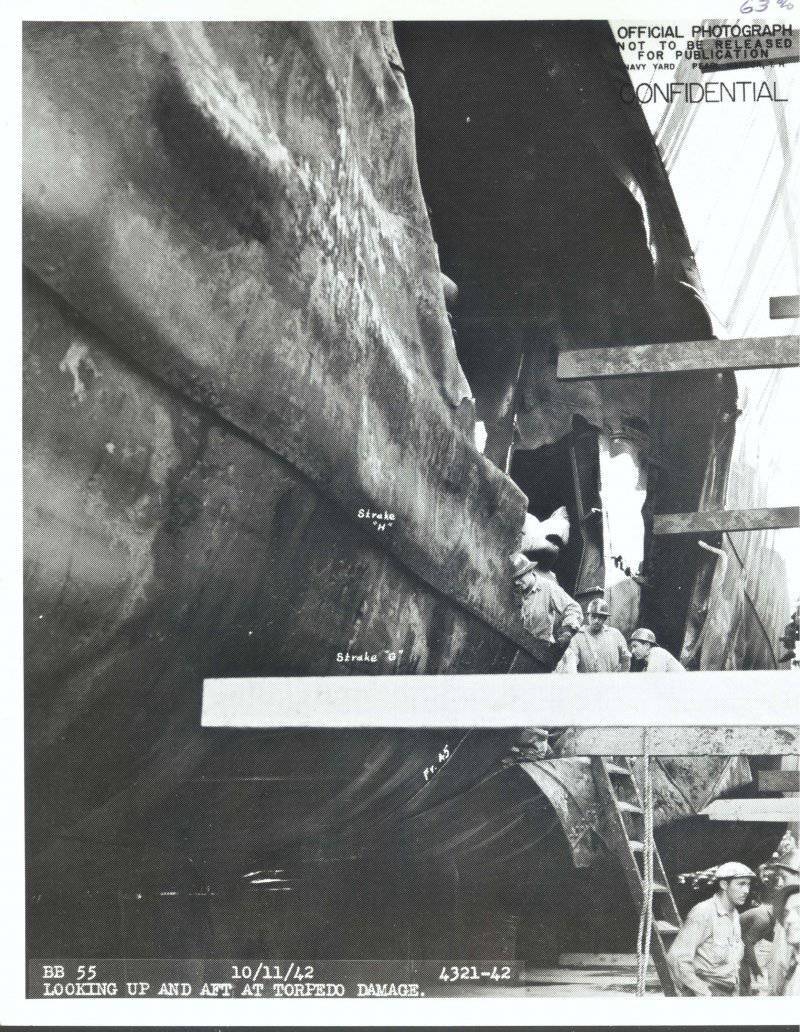
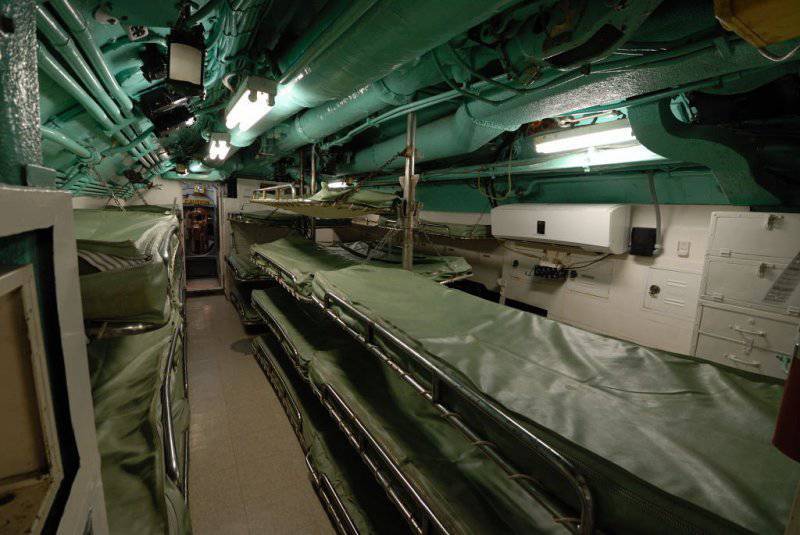
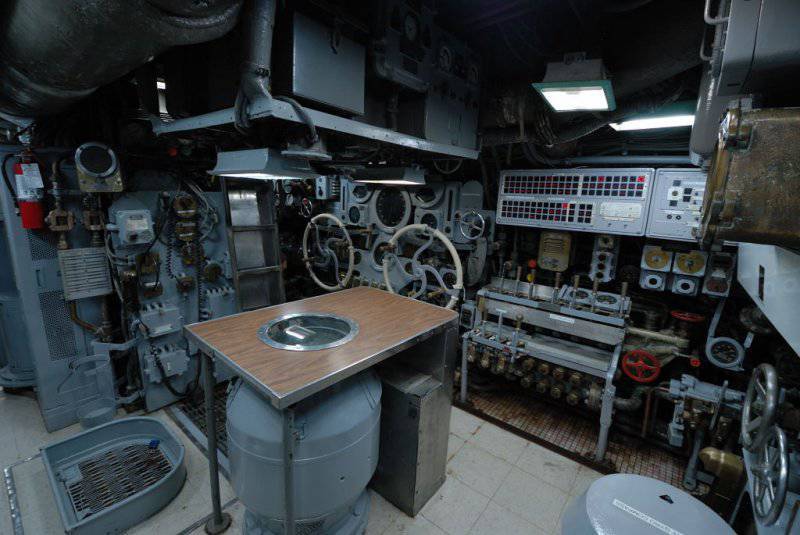
Information